- Marion Usselman
- https://www.ceismc.gatech.edu/about/staffdirectory/marion-usselman
- AMP-IT-UP Principal Investigator
- Advanced Manufacturing and Prototyping Integrated to Unlock Potential
- https://ampitup.gatech.edu
- Georgia Institute of Technology
- Meltem Alemdar
- https://www.ceismc.gatech.edu/about/staffdirectory/meltem-alemdar
- Senior Research Scientist/co-PI
- Advanced Manufacturing and Prototyping Integrated to Unlock Potential
- https://ampitup.gatech.edu
- Georgia Institute of Technology
- Douglas Edwards
- Research Associate II
- Advanced Manufacturing and Prototyping Integrated to Unlock Potential
- https://ampitup.gatech.edu
- Georgia Institute of Technology
- Jessica Gale
- https://www.ceismc.gatech.edu/about/staffdirectory/dr-jessica-gale
- Senior Research Scientist
- Advanced Manufacturing and Prototyping Integrated to Unlock Potential
- https://ampitup.gatech.edu
- Georgia Institute of Technology
- Sabrina Grossman
- https://ampitup.gatech.edu/
- Program Director
- Advanced Manufacturing and Prototyping Integrated to Unlock Potential
- https://ampitup.gatech.edu
- Georgia Institute of Technology
- Jayma Koval
- Research Associate II
- Advanced Manufacturing and Prototyping Integrated to Unlock Potential
- https://ampitup.gatech.edu
- Georgia Institute of Technology
- Jeremy Lingle
- Senior Research Scientist
- Advanced Manufacturing and Prototyping Integrated to Unlock Potential
- https://ampitup.gatech.edu
- Georgia Institute of Technology
- Sunni Newton
- Research Associate II
- Advanced Manufacturing and Prototyping Integrated to Unlock Potential
- https://ampitup.gatech.edu
- Georgia Institute of Technology
- Jeff Rosen
- CEISMC Program Director and Co-PI Implementation and Partnerships
- Advanced Manufacturing and Prototyping Integrated to Unlock Potential
- https://ampitup.gatech.edu
- Georgia Institute of Technology
- Mike Ryan
- https://ceismc.gatech.edu/about/staffdirectory/mike-ryan
- Senior Researcher
- Advanced Manufacturing and Prototyping Integrated to Unlock Potential
- https://ampitup.gatech.edu
- Georgia Institute of Technology
Facilitators’
Choice
Choice
Public Discussion
Continue the discussion of this presentation on the Multiplex. Go to Multiplex










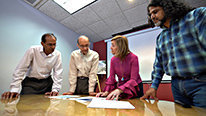
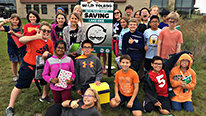
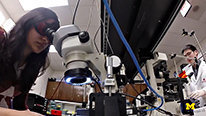
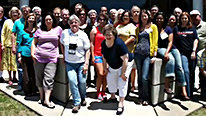
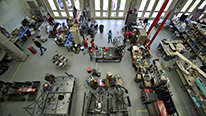

Marion Usselman
CAPACiTY Principal Investigator
Welcome to the AMP-IT-UP project video, which highlights reflections by teachers and school system administrators about their experience with AMP-IT-UP middle school math, science and engineering curriculum materials. We hope that you will check out the materials, which are the end product of a 7-year long MSP project. The curriculum components are described at https://ampitup.gatech.edu/amp-it-brochure, and are available on our website for free download.
Please get in touch with us about any questions. We would love to work with you to bring the instructional materials to more teachers and students.
We have very solid evidence in the form of state-level math and science test scores that randomly assigned students who take our middle school engineering course for two years have significantly higher math and science test scores compared with students who were not assigned to take the elective connections course. And the students have higher levels of engagement and lower math and science anxiety. Dr. Meltem Alemdar, AMP-IT-UP's research lead, can provide the details.
The AMP-IT-UP project in general is described in the 2017 Video Showcase at https://stemforall2017.videohall.com/presentations/948.
Our mathematics modules were highlighted in the 2018 Video Showcase at https://stemforall2018.videohall.com/presentations/1119.
We hope to have a lively discussion.
Marion
Sally Crissman
Senior Science Educator
In my experience, once teachers see that a new approach or curriculum benefit their students, they roll up their sleeves and do what it takes! I find your video with classroom clips and teacher testimony invigorating. At this point in your project, what resources (time, materials, school support) are essential to prepare teachers to use AMP IT UP?
Sally
Marion Usselman
CAPACiTY Principal Investigator
Sally,
Our one-week science and math modules, which provide teachers with scaffolded materials that promote 3D learning, are free for download from our website. The zip files include all the student and teacher materials, videos, and links to some computer simulations. Most modules have minimal materials requirements. There are a couple of 7th grade math modules that require 3D printed parts. The download includes the print file, so schools with 3D printers can print their own. We are also setting up to provide those materials at cost to schools implementing the materials. We are also willing to provide professional development on the materials to schools wanting to implement, at cost to cover our time.
The engineering course (STEM-Innovation and Design) materials are also free for download. Those are 18-week courses, and are best implemented with some professional development. There are equipment requirements for those courses, including a 3D printer and LEGO Mindstorm robots for the 8th grade course, and a set of pneumatic catapults for the 6th grade. These materials can often be purchased with Perkins funds for Career and Technical Education programs.
We are at the end of our grant period, so are working to put in place the infrastructure to continue to support dissemination and scaling of the materials. We are interested in partnering with other programs and schools in that effort.
Marion
Dave Miller
Hi Marion, I’m curious whether any of the study focus has gathered student insights throughout the intervention so as to have that data set to share with teachers and school administrators. Interesting program, and interested to learn more. Thanks for sharing in the showcase! - Dav
Meltem Alemdar
Senior Research Scientist/co-PI
Thanks, Dave. We collected hundreds of student interviews across 4 middle schools. Students highlighted that the modules are very engaging, in most cases, they like it more than their regular courses. We also look at the knowledge transfer between the engineering course and science and math. The results were very promising how students transfer the skills and knowledge between these courses. It also affects their attitudes towards science and math. We presented these papers at AERA and NARST, currently working on publishing them. We shared the results annually in our summer teacher institute, with district and district administrators and also with the school board. This was very important to have a strong partnership.
DeLene Hoffner
Lead Teacher
I am so impressed with this program. It shows that giving students the opportunity for STEM increases their math/science test scores. In the 5 years of your data showing significant increases on test scores, what part of this project do you feel attributes to that student success the most?
Marion Usselman
CAPACiTY Principal Investigator
Hi DeLene,
Thanks for your note. We have not teased out causality with regards to the increase in test scores, but there are certain things we can surmise. We are working with very low performing schools, where a majority of the students regularly score in the "beginning" level on their standardized tests. The students who have been in our STEM-ID course during two of their middle school years show a marked movement from the "beginning" to the "developing" category. The STEM-ID courses emphasize the engineering design process, foundational math skills, experimental design, and data analysis. They don't, by and large, emphasize grade-level specific math and science skills. My own view is that the power of the experience stems from the fact that it is a course, running in parallel to their core math and science, where the students have a safe and engaging opportunity to practice their foundational math and science skills to answer questions that interest them. They become more comfortable using math to answer questions, and are more comfortable with the science practices and the process of science and engineering. We don't know whether the students "know" more of the actual content that is on the test, or whether they have gained the confidence to be able to actually try to engage with an exam question and try to answer it.
Though we don't have independent confirmation of this from the state-level math exams, our math teachers report that they see much better student achievement in statistics-based content when they use our statistics-focused one-week modules. Teachers report that for the first time, they have a compelling and meaningful way to teach about box-plots, random samples, measures of center, etc. We would love for others to try them out.
Marion
Acacia McKenna
Director, Science Education Competitions
Great video. This program is impressive in terms of educational delivery and impact. While you are at the end of the grant period, what is being done to disseminate this information to educators? In the above thread, you mention that many of these resources are readily available at no cost. What marketing strategies are in place to spread the word about this program?
Marion Usselman
CAPACiTY Principal Investigator
Acacia,
The issue of sustainability and broad dissemination is one that we're very interested in. Our original school system partner has written our materials into their core curriculum and we worked closely with them on a sustainability plan. We are also working with a number of other school systems within Georgia, and one in Louisiana, that are interested in adopting our STEM-ID engineering course. Through those efforts we have expanded STEM-ID from the initial 4 schools to about 30 this last year. With the modules, we included them in a partnership with another local school system, so we are getting some traction. However, this has all been done under the grant no-cost extension.
This summer we have our first for-fee professional development workshops on the materials. It is a challenge going from a model where the teachers are paid for participating in PD, to one where we expect to be paid. But we need to pay salaries to keep people working on the project. Our best marketing so far has been through our personal connections to people within the school systems and the state department of education. Plus presentations at state and national conferences for teachers. We are developers, not marketers, so there has been a learning curve.
I think there is a big need at NSF to help with this transition. It isn't a world where if you put it out there, they will come, even with really good data behind it. We're optimistic, but haven't really figured it out yet.
Jonathan Lewis
Very encouraging. I hope moving to a fee-based PD model, or something similar is successful. Maybe some underwriting from tech sector partners? I can see why the personal connections have been a help in spreading the word, clearly the teachers are on board! I would love to see similar efforts aimed at basic science in marginalized communities with looming challenges; e.g., saltwater intrusion, subsidence, loss of coastal wetlands, brownfield redevelopment, watershed health.
Marion Usselman
CAPACiTY Principal Investigator
We have some strong relationships with tech and business partners, and we are definitely including them in plans moving forward. Stratasys and IronCAD have been particularly supportive.
I think there would be enormous value in having other integrated STEM courses for middle schools that could be offered in parallel to their core math and science courses, to provide relevance and practice. The time commitment is really quite small for a large impact--a one semester course for each of two years, in the elective/connections time slot. I don't think there is anything magical about the actual topics that are covered in the courses. (STEM-ID has a carnival challenge, an aerospace challenge, and a robot rescue challenge.) The power is in the scaffolding of engineering design, with an emphasis on the authentic use of math and science. Having a sequence that revolved around designing solutions within the environmental space could provide substantial benefit for all of STEM, and could include writing within the curriculum and a an increasing awareness of the role of government.
DeLene Hoffner
Lead Teacher
What do you see are your biggest challenges? Have you come across any challenges which became key points of learning for you and your project?
Marion Usselman
CAPACiTY Principal Investigator
Over the course of the whole MSP project there have been a variety of challenges, many of which stem from the large amount of teacher turnover in these types of schools. Of our two initial middle schools, where much of our data was collected, there was an average annual teacher turnover rate of 33% in one school, and 50% in the other. It can be hard to get traction in those cases, but we also had some great partners among the teachers and administrators.
Now, at the conclusion of the project, we have two major challenges--1) how to move the products from being developed and supported by data, but not widely known, to a point where they are being used by many more students. We are developers, not marketers or publishers, and this is a juncture where I think many curricular projects end up stalling. We feel that because the taxpayers paid for the materials, they should be made available absolutely as cheaply as possible. Do we give them to a publisher, who will market but also charge a lot? How do we monetize them in a way that we can make enough money to keep some people supporting the project, while still making the actual materials available for free download? It is a hard nut to crack.
The other challenge is that projects this size collect massive amounts of data. When the project funds run out, the researchers need to move on to newly funded projects. How can we afford to support people to continue to mine the data for the many sound research results? Luckily this was initially a 5-year project, which did allow us time to collect and analyze some longitudinal data, particularly since we have had two no-cost extensions. We have a 3-year STEM+C design and development project as well (CAPACiTY). With that time frame you barely have time to iterate once on the curriculum before the money runs out, let alone collect longitudinal data that might show whether students actually change their course-taking pattern. I think it is short-sighted for NSF to just fund shorter projects, particularly since there isn't an avenue to then ask for continuation funding for promising projects. It makes people hop from project to project, instead of working for an extended time to move from research to practice. (That is my soap box. ;-) )
Torran Anderson
What great resources you've developed! Looking at your website, I like how clearly the modules are laid out from life sciences to physical sciences. What was your development process like to create the framework for the different modules? Did you begin creating modules in a particular area and then expand out from there?
Marion Usselman
CAPACiTY Principal Investigator
Torran,
That is a great question. The initial project proposed a larger amount of integration between the engineering classes and the math and science modules. We spent quite a large amount of time trying to conceptualize how that would work in the context of very challenging schools with a very large amount of teacher turn-over, where you really didn't have stable grade-level teams who could work and plan together. Our revelation was that we could integrate across practices instead of disciplinary content, emphasizing the integrative themes of experimental design, data visualization, and data-driven decision making. So all the materials have a common feel and emphasize practices related to data--its collection, representation, analysis, and use in decision making.
Once we had that basic framework figured out, we moved forward designing science modules that were contextualized in grade-level specific disciplinary content. We have very experienced science curriculum designers on the team, which obviously helped. (On of our lead developers, Mike Ryan, was on the development team for the Learning By Design project, which became part of the Project-Based Inquiry Science series.) It is still a multi-year process, as the content only comes around once per year, so there is only one chance to pilot per year. Each module went through 3-4 rounds of testing and iterative changes.
The development of the math modules was slower, as there isn't the same history of project-based learning in mathematics, and "practices" aren't accepted by teachers as being "content". Teachers were more skeptical about spending the time implementing them, figuring that they were add-ons and not part of regular instruction. So they would implement only after the kids had finished their standardized testing in the spring, as fun activities. It took several years to get them to understand that the actual instruction about box plots or the Pythagorean Theorem should take place within the module--that it is important to give the kids a reason to know that content before going through the mathematical instruction. It took some teachers finding that their statistics test scores went up substantially to get them to be willing to use them as the primary instruction, rather than as frosting on the cake. Once they experienced that, they were willing to incorporate the other modules. Now the school system has placed them in the center of their official curriculum, so we got over that hurdle. It take a lot of years, however.
Shelly Rodriguez
What a great project. It is wonderful to see girls engaged in building and creating! What if any changes did you notice in their sense of agency or confidence?
Marion Usselman
CAPACiTY Principal Investigator
Shelly,
Because our engineering courses are considered "connections" courses in our partner school system, students were put into the classes randomly, not by request. So we have as many girls as boys in the classes. As reported in our journal article referenced below, enrollment for two or more years in the engineering course significantly predicted improvements in behavioral and cognitive engagement and in science interest, and higher ratings of engagement in technology and science, and lower math and science anxiety. While we haven't yet broken it down by gender, the results suggest that the engineering courses made science and math more relevant to the students.
We also have more anecdotal evidence that girls were becoming more engaged as there was an increase in the number of girls participating in the robotics program at the high school. We will be looking at some of that data more closely later.
Alemdar, M., Moore, R.A., Lingle, J. A., Rosen, J, Gale, J., & Usselman, M. C. (2018). The impact of a middle school engineering course on students‘ academic achievement and non-cognitive skills. International Journal of Education in Mathematics, Science and Technology (IJEMST), 6(4), 363-380. DOI: 10.18404/ijemst.440339
Further posting is closed as the showcase has ended.